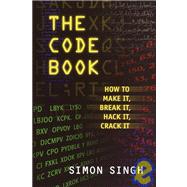
Note: Supplemental materials are not guaranteed with Rental or Used book purchases.
Purchase Benefits
| Introduction | p. 1 |
| The Cipher of Mary Queen of Scots: The birth of cryptography, the substitution cipher and the invention of codebreaking by frequency analysis | p. 5 |
| The Anonymous Codebreaker: The Vigenere cipher, why cryptographers seldom get credit for their breakthroughs and a tale of buried treasure | p. 51 |
| The Mechanization of Secrecy: The Zimmermann telegram, the Enigma machine and how cryptography changed the courses of World Wars I and II | p. 95 |
| The Language Barrier: The impenetrability of unknown languages, the Navajo code talkers of World War II and the decipherment of Egyptian hieroglyphs | p. 152 |
| Alice and Bob Go Public: Modern cryptography, the solution to the so-called key-distribution problem and the secret history of nonsecret encryption | p. 180 |
| Pretty Good Privacy: The politics of privacy, the future of cryptography and the quest for an uncrackable code | p. 221 |
| The Codebreaker's Challenge | p. 243 |
| Appendices | p. 245 |
| Acknowledgments | p. 253 |
| Further Reading | p. 255 |
| Picture Credits | p. 260 |
| Index | p. 261 |
| Table of Contents provided by Ingram. All Rights Reserved. |
The New copy of this book will include any supplemental materials advertised. Please check the title of the book to determine if it should include any access cards, study guides, lab manuals, CDs, etc.
The Used, Rental and eBook copies of this book are not guaranteed to include any supplemental materials. Typically, only the book itself is included. This is true even if the title states it includes any access cards, study guides, lab manuals, CDs, etc.
Excerpted from The Code Book for Young People by Simon Singh
All rights reserved by the original copyright owners. Excerpts are provided for display purposes only and may not be reproduced, reprinted or distributed without the written permission of the publisher.